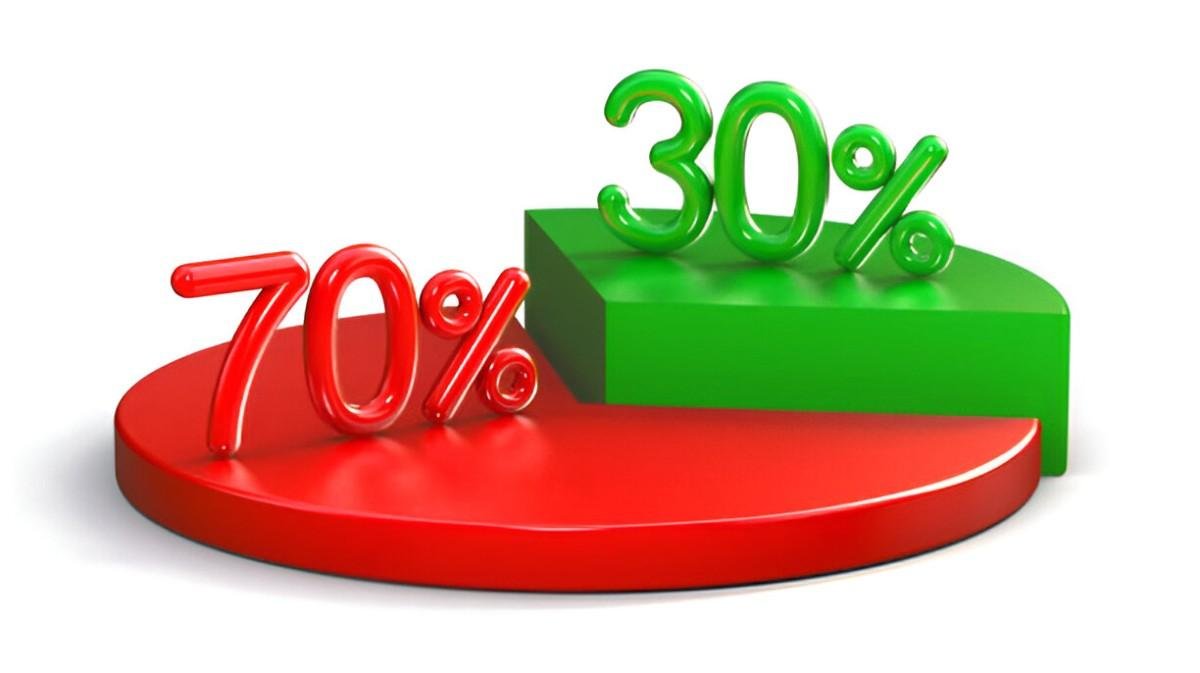Investors often struggle with finding the right balance between risk and reward. One strategy that has stood the test of time is the 70/30 portfolio, where 70% is allocated to stocks (equities) and 30% to bonds (fixed income). In this article, I’ll break down why this allocation works, how to implement it, and whether it’s the right choice for your financial goals.
Table of Contents
Why the 70/30 Allocation?
The 70/30 split is a middle ground between aggressive (100% stocks) and conservative (60/40) portfolios. It provides:
- Growth potential from equities.
- Stability from bonds, reducing volatility.
- Rebalancing opportunities to lock in gains and manage risk.
Historical Performance
A backtest from 1972–2023 shows how a 70/30 portfolio performed compared to other allocations:
| Portfolio | Avg. Annual Return | Worst Year | Best Year |
|---|---|---|---|
| 100% Stocks | 10.2% | -37.0% (2008) | +37.6% (1995) |
| 70/30 Stocks/Bonds | 9.1% | -22.3% (2008) | +28.7% (1995) |
| 60/40 Stocks/Bonds | 8.7% | -20.1% (2008) | +25.1% (1995) |
Key Takeaway: The 70/30 mix reduces downside risk while still capturing strong long-term returns.
How to Build a 70/30 Mutual Fund Portfolio
Step 1: Choose Your Stock Funds (70%)
A well-diversified equity allocation includes:
- U.S. Total Market (50%) – e.g., VTSAX (Vanguard) or FSKAX (Fidelity).
- International Stocks (20%) – e.g., VTIAX (Vanguard) or FTIHX (Fidelity).
Why this mix?
- U.S. stocks drive growth.
- International stocks provide diversification and hedge against dollar risk.
Step 2: Choose Your Bond Funds (30%)
For stability, consider:
- U.S. Total Bond Market (20%) – e.g., VBTLX (Vanguard) or FXNAX (Fidelity).
- TIPS or Short-Term Bonds (10%) – For inflation protection (e.g., VTAPX).
Why not all long-term bonds?
- Rising interest rates hurt long-term bonds more.
- Short-term bonds offer better stability.
Rebalancing: The Key to Maintaining 70/30
Markets fluctuate, and your allocation will drift. Annual rebalancing ensures you stay on track.
Example of Rebalancing in Action
Assume you start with:
- $100,000 total ($70K stocks, $30K bonds).
After a year:
- Stocks grow 15% → $80,500
- Bonds grow 3% → $30,900
- New total: $111,400
New allocation:
- Stocks: 72.3% ($80,500 / $111,400)
- Bonds: 27.7%
Action Needed:
- Sell $2,520 in stocks.
- Buy $2,520 in bonds.
- Back to 70/30.
Why this matters:
- Forces you to sell high, buy low.
- Prevents risk creep (too much in stocks before a crash).
Who Should Use a 70/30 Portfolio?
Best For:
✔ Investors within 10–20 years of retirement (balances growth & safety).
✔ Moderate-risk tolerance (can handle 20%+ drops but wants smoother returns).
✔ Those who want a simple, hands-off strategy.
Not Ideal For:
✖ Young investors (20s–30s) – May prefer 90/10 for higher growth.
✖ Retirees needing income – Might shift to 60/40 for more bonds.
Alternatives to the 70/30 Approach
| Strategy | Allocation | Best For |
|---|---|---|
| Aggressive Growth | 90/10 | Young investors (30+ year horizon) |
| Classic Balanced | 60/40 | Retirees or conservative investors |
| Golden Butterfly | 40% stocks, 20% gold, 40% bonds | Hedge against inflation & crashes |
Final Verdict: Is 70/30 Right for You?
The 70/30 mutual fund portfolio is a time-tested, low-maintenance strategy that balances growth and safety. It’s not the highest-returning option, but it reduces emotional stress and smooths out market volatility.





